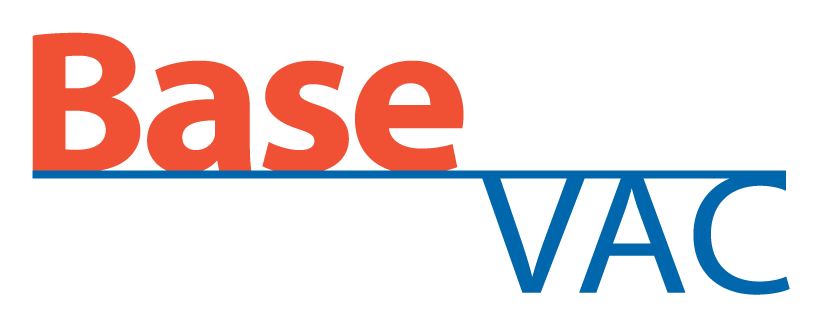Thank you for following our series on Dental Vacuum Ventilation. To date, we have covered the importance of dental vacuum ventilation, as well as options in ventilation installations. Today we will be continuing the segment on installation tips.
In today’s segment, we will be diving into condensation prevention, proper vent stack sloping, protecting against the elements, and wildlife.
Proper Sloping and Condensation Prevention
Next to overheating, the other big killer of dental dry-vacuums is moisture entering the pump. There are two ways for liquids to enter a dry-vacuum pump; 1) Through the air/water separator (AWS) or 2) through the exhaust pipe.
Condensation Prevention
Moisture entering from the exhaust pipe is preventable with a couple of techniques. BaseVac has developed a dual drip-leg system to prevent condensation from finding its way back to the vacuum pump. These two pipes are connected with an exhaust hose that reduces noise from the vibrations, as well as acts like another moisture barrier.
One of the drip-legs is attached to the exhaust of the vacuum pump, and this will pull away any moisture formed from the hot air that is being blown out of the motor. The second drip-leg is connected to the external exhaust stack that leads outdoors. The second drip-leg will capture any moisture that enters or forms from humidity on the external pipe. Since BaseVac introduced the new dual drip-leg system, failures due to moisture dropped by 40%.
Proper Sloping
The following suggestion will hurt any plumber reading this, as it will go against anything they have ever been taught. When exhausting a Dental dry-vacuum, it is recommended to have the pipe sloped towards the outside (away from the pump). In external wall applications, will direct the condensation towards the outdoors, away from the vacuum pump. Sloping would be a little more difficult for applications utilizing roof access to exhaust, but it isn’t impossible. Adding an additional drip-leg, one that can direct and moisture to a drain, would be ideal.
Sloping towards the outside would also be beneficial if the exhaust pipe was not installed to protect it from the elements.
Weather and Wildlife Proofing
Similar to the exhaust piping in your home, you would want to protect the exhaust pipe from your vacuum pump from the elements and wildlife.
There isn’t a wrong way of doing this; as long as rain/snow cannot enter the pipe and a cage is added so that animals can’t get in, then you have protected your vacuum system. Most plumbers already know how to do protect against wildlife and the elements. There are many different products on the market that are sold with different esthetic to fit any building décor.
Simply put, you should have the openings of the pipe facing towards the ground to avoid the elements from entering into your mechanical room, as well as a cage the stack so no wildlife like squirrels/birds can enter the pipe.
Follow Us
The last segment of this series will be discussing shortcuts that should never be taken with Dental Vacuum ventilation, specifically talking about using current plumbing stacks and internal exhaust options.

